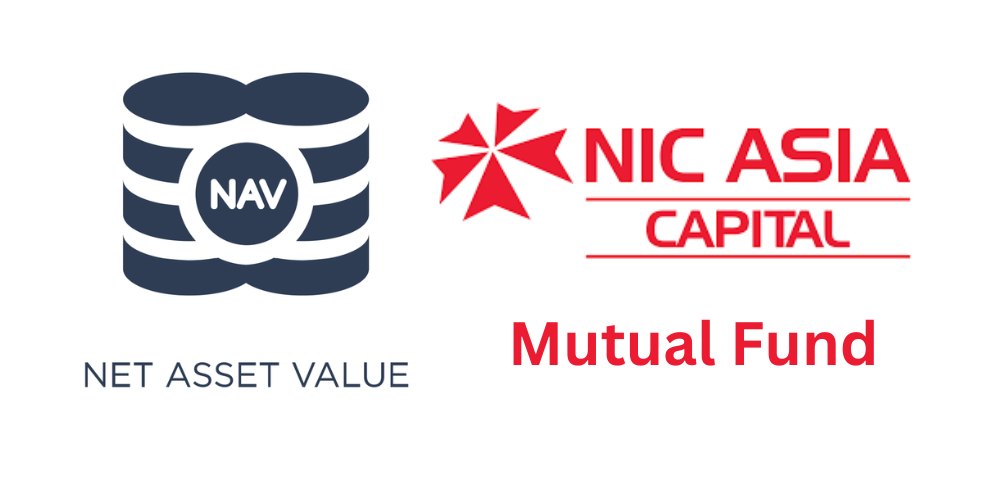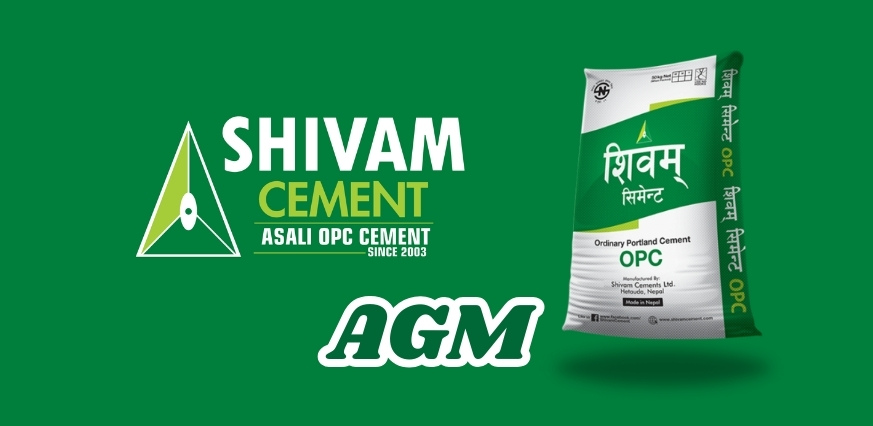Blogs
Performance Overview of NIC Asia Capital’s Mutual Funds for Kartik

NIC Asia Capital manages six mutual funds, and the NAV report for all these funds has been published for the month of Kartik. This report provides a comparative analysis of each mutual fund, highlighting the data from the previous month alongside the current month’s performance.
| Fund Name | Fund Type | NAV (Kartik) | NAV (Previous Month) | Fund Size (Crores) | Investments (Crores) | Bank Balance (Crores) | Net Profit (Kartik) | Net Profit (Previous Month) |
|---|---|---|---|---|---|---|---|---|
| NIC Asia Balanced Fund | Closed-end (10 years) | Rs. 11.28 | Rs. 11.38 | Rs. 75.50 | Rs. 53.67 (listed shares), Rs. 21.77 (debentures), Rs. 0.73 (non-listed shares) | Rs. 2.44 | Rs. 9.49 Crore | Rs. 10.22 Crore |
| NIC Asia Dynamic Debt Fund | Open-end | Rs. 10.54 | Rs. 10.53 | Rs. 88.86 | Rs. 27.84 (listed shares), Rs. 31.63 (debentures), Rs. 0.44 (non-listed shares) | Rs. 24.90 (bank deposits), Rs. 8.70 (fixed deposits) | Rs. 3.77 Crore | Rs. 3.70 Crore |
| NIC Asia Growth Fund | Closed-end (7 years) | Rs. 11.97 | Rs. 12.14 | Rs. 83.52 | Rs. 80.84 (listed shares), Rs. 12.50 (debentures), Rs. 0.80 (non-listed shares) | Rs. 4.56 | Rs. 16.31 Crore | Rs. 17.73 Crore |
1. NIC Asia Balanced Fund (NICBF)
The NIC Asia Balanced Fund is a closed-end scheme for 10 years. Kartik’s NAV is Rs. 11.28, slightly down from Rs. 11.38 the previous month. With a fund size of Rs. 75.50 crores, it primarily invests Rs. 53.67 crores in listed shares and Rs. 21.77 crores in debentures. It holds Rs. 2.44 crores in the bank. Kartik’s net profit is Rs. 9.49 crores, lower than Rs. 10.22 crores last month.
2. NIC Asia Dynamic Debt Fund (NADDF)
The NIC Asia Dynamic Debt Fund is an open-end mutual fund with no maturity date. Kartik’s NAV is Rs. 10.54, slightly higher than Rs. 10.53 the previous month. The fund size is Rs. 88.86 crores, with investments in listed shares (Rs. 27.84 crores) and debentures (Rs. 31.63 crores). The fund also holds Rs. 24.90 crores in bank deposits. Kartik’s profit is Rs. 3.77 crores, up from Rs. 3.70 crores last month.
3. NIC Asia Growth Fund (NICGF)
NICGF is a 7-year closed-end fund with an NAV of Rs. 11.97 in Kartik, decreasing from Rs. 12.14 the month before. The fund size is Rs. 83.52 crore, with Rs. 80.84 crore in listed shares and Rs. 12.50 crore in debentures. The bank balance amounts to Rs. 4.56 crores. The fund reported a profit of Rs. 16.31 crores, down from Rs. 17.73 crores.
4. NIC Asia Select-30 Fund (NICSF)
NICSF is a closed-end mutual fund with a 7-year term. Kartik’s NAV is Rs. 11.38, slightly lower than Rs. 11.42 the prior month. The fund has a fund size of Rs. 125 crores, investing Rs. 91.30 crores in listed shares and holding Rs. 29.82 crores in bank deposits. Kartik’s profit is Rs. 17.03 crores, compared to Rs. 17.61 crores last month.
5. NIC Asia Flexi Cap Fund (NICFC)
The NIC Asia Flexi Cap Fund has an NAV of Rs. 11.64 in Kartik, down from Rs. 11.74 in the previous month. Its Rs. 102 crore fund size is allocated to Rs. 89.61 crore in listed shares and Rs. 12.30 crore in fixed deposits. The fund’s net profit dropped to Rs. 16.59 crores from Rs. 17.64 crores the month before.
6. NIC Asia Growth Fund 2 (NICGF2)
NICGF2 is a 7-year closed-end mutual fund with an NAV of Rs. 10.52 in Kartik, falling from Rs. 11.01 the previous month. Its fund size is Rs. 90.50 crores, investing Rs. 70.33 crores in listed shares and Rs. 12.50 crores in fixed deposits. The fund’s profit for Kartik is Rs. 8.66 crores, compared to Rs. 9.50 crores last month.
Blogs
52-Week Low & High Microfinance Shares in Nepal: Current Status and Future Outlook
The microfinance sector in Nepal has been moving sideways for a long time. The group sub-index has been fluctuating between 4,600 and 5,600. Recently, the index reached a swing high of nearly 4,900 but then closed at 4,671.74.
The national budget did not bring any immediate changes that could affect the capital market. So, investors are now waiting for the upcoming monetary policy. After the newly appointed Governor of Nepal Rastra Bank, Dr. Bishwanath Paudel, reduced the risk weight on margin loans from 125% to 100% during the third quarterly review, investor confidence grew.
Investors now hope that the following changes will be introduced in the next monetary policy:
- Removal of the current Rs. 15 crore limit on individual investment
- Removal of the 15% dividend cap on microfinance institutions
- Permission for banks and financial institutions to trade shares for less than one year
Governor Paudel’s public remarks have made investors hopeful that the upcoming monetary policy will be share-market friendly.
Despite the pressure on the market at the end of Ashar, investors are optimistic about a rebound afterward. Experts say microfinance and insurance stocks—whose prices have not surged yet compared to others—might offer better opportunities in the coming days.
Top 20 Microfinance Companies Nearest to 52-Week Low

Some microfinance companies are trading close to their 52-week low prices. These stocks may offer good value for long-term investors. Here are some examples:
-
Nesdo Samriddhi Microfinance had a high of Rs. 2,641 and a low of Rs. 1,540 in the past year. It is currently trading near its lowest point.
-
Sana Kisan Bikas Microfinance and Jan Utthan Community Microfinance are both trading less than 1% above their 52-week lows.
-
Jeevan Bikas, NIC Asia, Infinity, Suryodaya Womi, RSDC, Asha, and Swabalamban Microfinance are trading just 1–3% above their yearly lows.
-
Other companies like Unique Nepal, Bijaya, Forward, Nirdhan Utthan, Diprox, Mahuli, Nerude Mirmire, National, Samata Gharelu, and Laxmi Microfinance are also trading only 3–5.5% above their low points.
According to experts, these stocks could be worth watching for those looking to invest at lower prices.
Microfinance Stocks Near 52-Week High

Interestingly, a few companies are still trading near their 52-week highs even though the overall market is in a downtrend:
-
Unnati Sahakarya Microfinance reached a high of Rs. 5,276 and is now trading at around Rs. 1,804.
-
CYCL Nepal Microfinance had a high of Rs. 1,958 and is still trading at Rs. 1,615, which is relatively strong.
On the other hand, many microfinance stocks are trading 20–40% below their 52-week highs:
-
Aatmanirbhar, Mahila, Grameen Bikas, Kalika, Global IME, Chhimek, Mero Microfinance, and Abhiyan are all trading 22% to 31% below their highs.
-
NMB, First Microfinance, RSDC, Laxmi, Nirdhan Utthan, Diprox, Sana Kisan, Mithila, National, and Swabhiman are trading 34% to 44% below their 52-week highs.
These stocks may still have room to rise if the market recovers and favorable policies are introduced.
Conclusion
The microfinance sector in Nepal is at a turning point. While the market has been moving sideways, investor confidence is building, especially with hopes for a supportive monetary policy. Stocks near their 52-week lows may offer attractive entry points, while those holding near their highs show relative strength.
For both new and experienced investors, this could be a good time to study the microfinance sector closely and plan for the long term. As always, careful research and risk assessment are essential before making any investment decisions.
Blogs
Asian Life Insurance to Issue Rights Shares from Asar 25
Asian Life Insurance Company Limited (ALICL) has announced the opening of its rights share issuance from Asar 25, 2082 (July 9, 2025). The company is offering 42% rights shares based on its current paid-up capital.
This means that shareholders will receive 4.2 new shares for every 10 existing shares they own. This issuance aims to raise over NPR 1.42 billion, with each share priced at NPR 100.
Key Details of the Rights Issue
| Topic | Information |
| Company Name | Asian Life Insurance Company Limited (ALICL) |
| Rights Share Ratio | 10:4.2 (42%) |
| Total Rights Shares to be Issued | 14,279,312.48 shares |
| Total Amount to be Raised | NPR 1,427,931,248 |
| Par Value Per Share | NPR 100 |
| Current Paid-Up Capital | NPR 3.39 billion |
| Paid-Up Capital After Issuance | NPR 4.82 billion |
| Issue Manager | Muktinath Capital Limited |
| Credit Rating | [ICRA Nepal] IRN A- (Adequate Safety) |
The company had set the book closure date for Jestha 16, 2082 (June 29, 2025). This means that only those shareholders who held shares until Jestha 14, 2082 (June 27, 2025) are eligible to apply for the rights shares. The application period for the rights issue will begin from Asar 25, 2082 (July 9, 2025) and will remain open until Shrawan 13, 2082 (July 28, 2025).
Application Process
- Eligible shareholders (who held shares before the book closure date) can apply for rights shares.
- Applications can be submitted through:
- Muktinath Capital
- Selected branches of Muktinath Bikas Bank (e.g., Biratnagar, Pokhara, Nepalgunj, etc.)
- Asian Life Insurance offices
- ASBA-approved banks and financial institutions
- Online via Meroshare (using C-ASBA system)
Why This Matters to Investors
- The rights issue provides existing shareholders with an opportunity to increase their holdings at par value.
- The company’s credit rating of A- suggests good ability to meet financial obligations.
- After the rights issuance, the company will have a stronger capital base of NPR 4.82 billion, which may support future business expansion.
Blogs
Citizens Mutual Fund Opens for Application from Asar 13

Citizens Mutual Fund is opening its public offering for the Citizens Sadabahar Yojana from Asar 13 (June 26, 2025). This open-ended mutual fund is being launched under the fund sponsorship of Citizens Bank International Limited and will be managed and sold by Citizens Capital Limited.
Out of the total 50 million units, 42.5 million units will be issued to the public. The fund is priced at Rs. 10 per unit, and investors can apply for a minimum of 100 units.
Applications can be submitted through the Meroshare online system, starting from Asar 13, with an early closing date of Asar 17 and the final closing date being Asar 27, if fully subscribed earlier.
What Makes This a Unique Investment?
The Citizens Sadabahar Yojana is an open-ended mutual fund, meaning investors can buy or sell units even after the initial offering period. However, it will not be listed on the stock exchange. Instead, investors can buy or sell units later through specified fund distributors at their convenience.
Where Will the Fund Be Invested?
According to the fund’s structure, the collected amount will be invested with the following limits:
-
Up to 75% in the stock market
-
Up to 10% in fixed deposits
-
Up to 5% in call deposits
-
Up to 10% in bonds and debentures
This structure provides a balanced investment approach, with a major portion in the equity market and the rest in safer financial instruments.
-

 Blogs3 days ago
Blogs3 days agoHydropower Gains 7.8% in One Month, Outperforming All Sectors
-
Blogs49 minutes ago
52-Week Low & High Microfinance Shares in Nepal: Current Status and Future Outlook
-

 Blogs4 days ago
Blogs4 days agoBanks Invest Rs. 16.45 Trillion in Directed Loans, 14% in Agriculture Sector | Says Nepal Rastra Bank
-

 Blogs7 months ago
Blogs7 months agoKarnali Yaks Win By 6 Wickets Against Chitwan Rhinos | Nepal Premier League 2024
-

 Blogs6 months ago
Blogs6 months agoSiuri Nyadi Power Limited Added to IPO Pipeline by SEBON
-

 Blogs6 months ago
Blogs6 months agoJanakpur Bots Vs Kathmandu Gurkhas 21st Match Highlights | NPL 2024
-

 Blogs1 year ago
Blogs1 year agoList of Stock Brokers in Nepal with NEPSE TMS Login – Updated
-

 AGM6 months ago
AGM6 months agoShivam Cements Proposes a 9% Dividend For FY 2080/81 and Announces Book Closure Date

